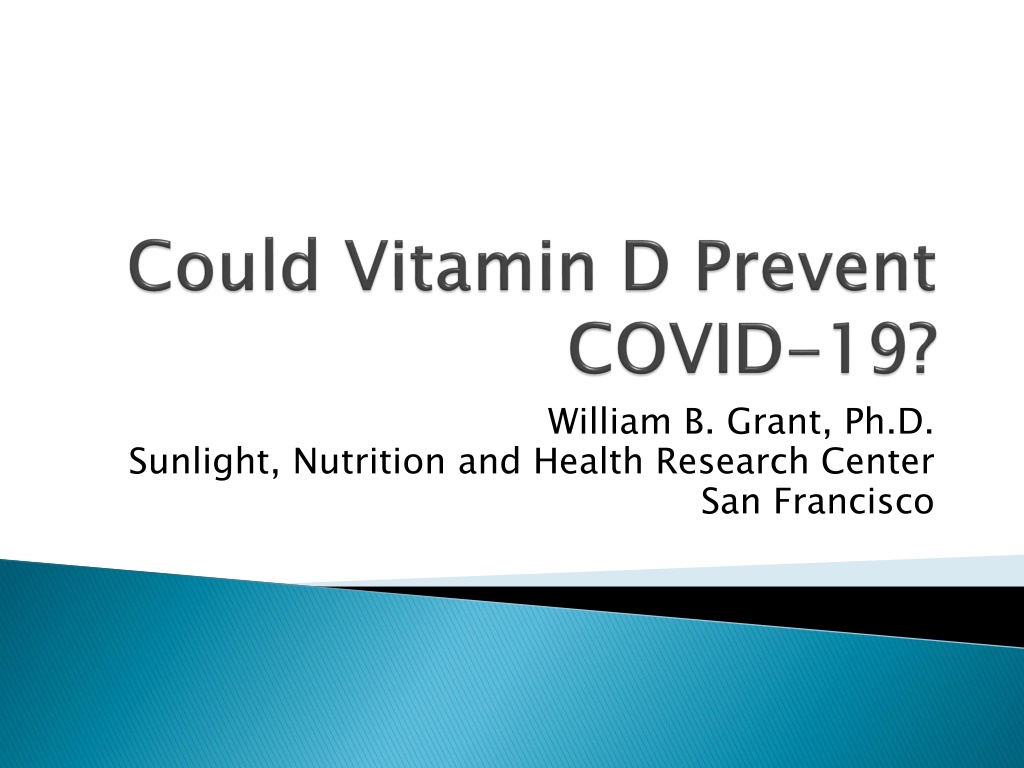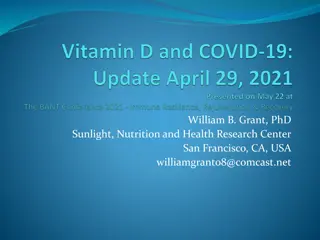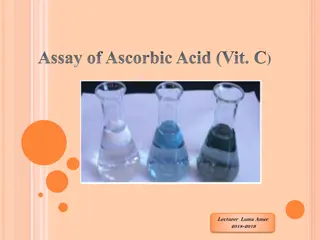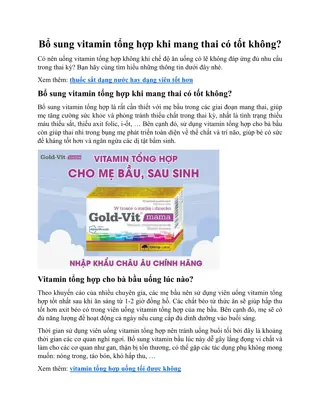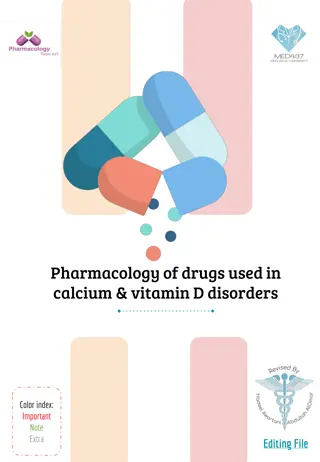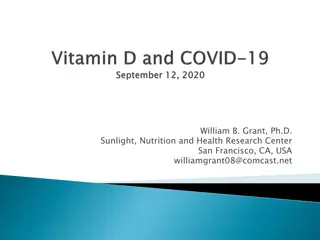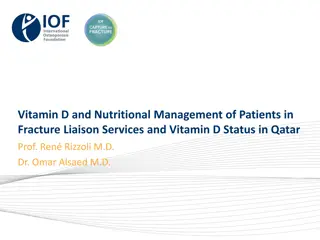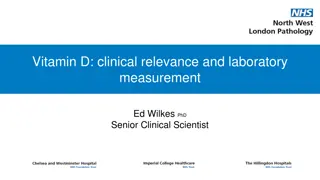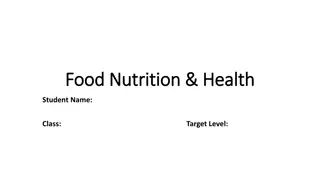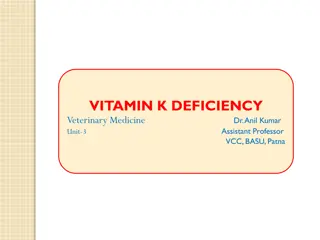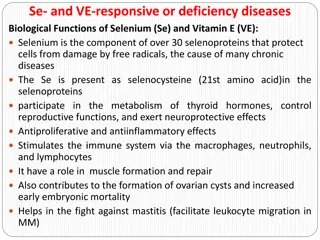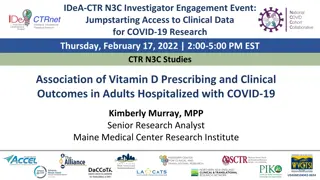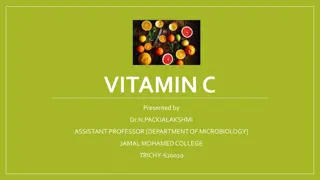Understanding the Role of Vitamin D in Reducing COVID-19 Risk
Vitamin D plays a crucial role in reducing the risk of COVID-19 by enhancing the body's immune response, reducing production of pro-inflammatory cytokines, and increasing anti-inflammatory cytokines. Individuals at greater risk include the elderly, those with chronic diseases, dark-skinned individuals, people in crowded conditions, smokers, and those living in polluted environments. Vitamin D also stimulates macrophages to release cathelicidin and defensins, which have antimicrobial properties. Observational studies and clinical trials support the benefits of vitamin D in reducing the risk of acute respiratory infections and pneumonia.
Download Presentation

Please find below an Image/Link to download the presentation.
The content on the website is provided AS IS for your information and personal use only. It may not be sold, licensed, or shared on other websites without obtaining consent from the author. Download presentation by click this link. If you encounter any issues during the download, it is possible that the publisher has removed the file from their server.
E N D
Presentation Transcript
William B. Grant, Ph.D. Sunlight, Nutrition and Health Research Center San Francisco
Who is at greater risk of COVID-19? Vitamin D mechanisms to reduce risk of infections Clinical trials of vitamin D and risk of acute respiratory tract infections Observational studies of COVID-19 with respect to vitamin D Other benefits of vitamin D Recommendations
The elderly Those with chronic diseases such as cardiovascular disease, diabetes, and hypertension Dark-skinned people living at mid and high latitudes People in crowded conditions including nursing homes, prisons, factories. Smokers, living in polluted environments.
One of the ways vitamin D reduces risk of viral and bacterial infectious diseases is through stimulating the macrophages (white blood cells) to release cathelicidin and defensins. They have anti-microbial and anti-endotoxin properties. They were shown to reduce risk of TB in 2006.
The bodys innate immune system generally fights viral infections by releasing cytokines. In the case of influenza and SARS-CoV-2 viruses, the production of cytokines becomes so intense that it is called a cytokine storm . This cytokine storm damages the lining of the lungs and other organs. It is a major cause of injury for COVID-19. Vitamin D reduces production of pro- inflammatory cytokines and increases production of anti-inflammatory cytokines.
The U.S. Public Health Agency canvassed homes in 12 U.S. communities for case-fatality data. During this event, those living in the SW states had lower case-fatality rates from influenza followed by pneumonia than those living in the NE states. It was hypothesized that solar UVB production of vitamin D reduced the cytokine storm, thus reducing the risk of damage to the linings of the lungs and, hence, the risk of pneumonia. Grant WB, Giovannucci E. Dermatoendocrinol. 2009;1(4):215-9.
Angiotensin-converting enzyme 2 (ACE2) is an enzyme attached to the cell membranes of cells in the lungs, arteries, heart, kidney, and intestines. ACE2 counters the activity of the related angiotensin-converting enzyme (ACE) ACE2 decreases with age and with prevalence of chronic diseases. SARS-CoV-2 reduces ACE2 concentrations. Vitamin D increases ACE2.
Among those receiving daily or weekly vitamin D, protective effects were stronger in those with baseline 25-hydroxyvitamin D levels <25 nmol/L (adjusted odds ratio 0.30, 0.17 to 0.53) than in those with baseline 25-hydroxyvitamin D levels 25 nmol/L (adjusted odds ratio 0.75, 0.60 to 0.95; P for interaction=0.006). Martineau AR, Jolliffe DA, et al. Vitamin D supplementation to prevent acute respiratory tract infections: systematic review and meta- analysis of individual participant data. BMJ. 2017 Feb 15;356:i6583. https://www.bmj.com/content/356/bmj.i6583
There have been several observational studies regarding serum 25(OH)D concentrations and severity of COVID-19. They were conducted in Belgium, Israel, Switzerland, UK, and the USA. Brief summaries of the findings and links to these studies follow.
A recent retrospective analysis at the University of Chicago of over 4000 patients was designed to examine whether vitamin D deficiency and treatment were associated with testing positive for COVID-19. They found that vitamin D deficiency that was not sufficiently treated was associated with an increased risk for COVID-19 infection. Meltzer, D.O., et al., Association of Vitamin D Deficiency and Treatment with COVID-19 Incidence. MedRxiv, 2020. https://www.medrxiv.org/content/10.1101/202 0.05.08.20095893v1
Similarly, a recent retrospective analysis Switzerland of 107 patients found that vitamin D concentrations were significantly lower in patients with positive PCR (polymerase chain reaction) tests for SARS-CoV-2 (11 ng/ml) compared with negative patients (25 ng/ml). The researchers concluded that vitamin D3 supplementation would be useful in the treatment of COVID-19 infection, in preventing a more severe disease and/or in reducing the presence of the virus in the lung and making the patients less infectious. D'Avolio, A., et al., 25-Hydroxyvitamin D Concentrations Are Lower in Patients with Positive PCR for SARS-CoV-2. Nutrients, 2020. 12 https://www.mdpi.com/2072-6643/12/5/1359/htm 12(5).
An observational study from Israel included 14,000 members of the Leunuit Health Services who were tested for COVID-19 infection between February 1 and April 30, 2020 and who had at least one previous blood test for 25(OHD level. The adjusted odds ratio for COVID-19 infection for 25(OH)D <30 ng/ml vs. >30 ng/ml was 1.50 (95%CI, 1.13 to 1.98) while the crude odds ratio for hospitalization for 25(OH)D <30 ng/ml vs. >30 ng/ml was 2.09 (1.01 to 4.31), P = 0.02, which, after adjusted for multiple clinical conditions became 1.95 (0.99 to 4.78), P = 0.056. Age over 50 years had the highest odds ratio for hospitalization, [adjusted OR = 2.71 (1.55 to 4.78)]. Merzon, E., et al., Low plasma 25(OH) vitamin D3 level is associated with increased risk of COVID-19 infection: an Israeli population-based study. FEBS Journal, 2020. https://febs.onlinelibrary.wiley.com/doi/abs/10.1111/febs.15495
The rate of vitamin D deficiency (25(OH)D<20 ng/mL) in West Flanders varies with age, sex and season but is overall very high (39.9%) based on analysis of 16274 control samples. We measured 25(OH)D levels in 186 COVID-19 patients (109 males (median age 68 years, IQR 53-79) and 77 females (median age 71 years, IQR 65-74)) and 2717 age/season- matched controls (999 males (median age 69 years, IQR 53-81) and 1718 females (median age 68 years, IQR 43-83)). COVID-19 patients showed lower median 25(OH)D (18.6 ng/mL, IQR 12.6-25.3, versus 21.5 ng/mL, IQR 13.9-30.8; P=0.0016) and higher vitamin D deficiency rates (58.6% versus 45.2%, P=0.0005). Surprisingly, this difference was restricted to male COVID-19 patients who had markedly higher deficiency rates than male controls (67.0% versus 49.2%, P=0.0006) that increased with advancing radiological stage and were not confounded vitamin D-impacted comorbidities. D De Smet, K De Smet, P Herroelen, S Gryspeerdt Vitamin D deficiency as risk factor for severe COVID-19: a convergence of two pandemics https://www.medrxiv.org/content/10.1101/2020.05.01.20079376v2
Patients admitted to ITU were younger than those managed on medical wards (61 years 12 vs. 76 years 15, respectively, p<0.001), with greater prevalence of hypertension, higher baseline respiratory rate, National Early Warning Score-2 and C-Reactive protein level. While mean serum 25(OH)D levels were comparable (p=0.3), only 19% of ITU patients had 25(OH)D levels greater than 50 nmol/L vs. 39.1% of non-ITU patients (p=0.02). However, there was no association with fatality, potentially due to small sample size and prompt diagnosis and treatment of VDD. (High dose vitamin D3 supplementation, varied by baseline 25(OH)D.) Panagiotou et al. Clin Endocrinol (Oxf). 2020 July 3 https://www.ncbi.nlm.nih.gov/pmc/articles/pmid/32621392/
The criteria: Temporality Strength of association Dose-response relationship Consistency of findings Plausibility (mechanisms) Alternate explanations Experiment (e.g., randomized controlled trials) Specificity Coherence with known facts
Using Hill's methodology for exploring causality, we aimed to determine in early May 2020 whether evidence supports vitamin D as a biological determinant of COVID- 19 outcomes. Vitamin D is a secosteroid hormone theoretically able to reduce COVID-19 risk through regulation of (i) the renin-angiotensin system, (ii) cellular innate and adaptive immunity, and (iii) physical barriers. Inverse associations were found between 25- hydroxyvitamin D concentrations and COVID-19 incidence and mortality. Randomized controlled trials testing vitamin D supplementation in the treatment of COVID-19 are in progress. Positive results in such studies would encourage the use of vitamin D supplements as an adjuvant treatment in COVID-19 Annweiler, Cao, Sabatier. Point of view: Should COVID-19 patients be supplemented with vitamin D? Maturitas 2020;140:24-26
Adequate vitamin D status seems to be protective against musculoskeletal disorders (muscle weakness, falls, fractures), infectious diseases, autoimmune diseases, cardiovascular disease, type 1 and type 2 diabetes mellitus, several types of cancer, neurocognitive dysfunction and mental illness, and other diseases, as well as infertility and adverse pregnancy and birth outcomes. Vitamin D deficiency/insufficiency is associated with all- cause mortality. Pludowski, Grant et al. Autoimmun Rev. 2013;12(10):976-. doi: 10.1016/j.autrev.2013.02.004
Most vitamin D clinical trials reported to date were based on guidelines for drugs. The basic assumptions: the trial is the only source of the agent; a linear dose Vitamin D trials should be based on 25(OH)D concentrations as proposed by Robert Heaney in 2014. Heaney RP. Guidelines for optimizing design and analysis of clinical studies of nutrient effects. Nutr Rev. 2014;72(1):48-54. Grant WB, Boucher BJ, Bhattoa, Lahore HJ. Why vitamin D clinical trials should be based on 25-hydroxyvitamin D concentrations. J Steroid Biochem Mol Biol. 2018;177:266-9. Most vitamin D clinical trials reported to date were based on guidelines for drugs. The basic assumptions: the trial is the only source of the agent; a linear dose- -response relationship. Vitamin D trials should be based on 25(OH)D concentrations as proposed by Robert Heaney in 2014. response relationship.
The Harvard VITamin D and OmegA-3 TriaL (VITAL) enrolled 25,000 participants and gave half 2000 IU/d vitamin D3. The Tufts D2d trial enrolled 2423 prediabetics and gave half 4000 IU/d vitamin D3. While the doses were too small and the baseline 25(OH)D levels high, secondary analyses found reduced risk of for cancer and diabetes for subgroups expected to benefit such as those with lower BMI. Grant and Boucher, Nutrients. 2019;11(9):2182. doi: 10.3390/nu11092182.
36 such trials are listed at https://clinicaltrials.gov/ct2/results?cond=C OVID- 19&term=%22vitamin+D%22&cntry=&state= &city=&dist https://vitamindwiki.com/COVID- 19+treated+by+Vitamin+D+- +studies%2C+reports%2C+videos
For optimal protection against COVID-19, it is recommended that 25(OH)D level be above 40 ng/ml (100 nmol/l). To achieve that level could take 2000 to 10,000 IU/d vitamin D3. If one has not been supplementing with vitamin D, suggest first taking 300,000 IU spread over a week or so. There is no risk of hypercalcemia or kidney stones or other adverse effects for these doses.
Magnesium is used by vitamin D during the conversions to 25(OH)D and 1,25(OH)2D3. Magnesium also has many other health benefits. Consider supplementing with 400 mg/d with MgCl, Mg citrate, or Mg glycinate. Kostov K, Halacheva L. Role of Magnesium Deficiency in Promoting Atherosclerosis, Endothelial Dysfunction, and Arterial Stiffening as Risk Factors for Hypertension. Int J Mol Sci. 2018;19(6):1724.
William B. Grant, Ph.D. wbgrant@infionline.net www.sunarc.org @wbgrant2 www.grassrootshealth.net https://vitamindwiki.com/ https://scholar.google.com/ https://pubmed.ncbi.nlm.nih.gov/
